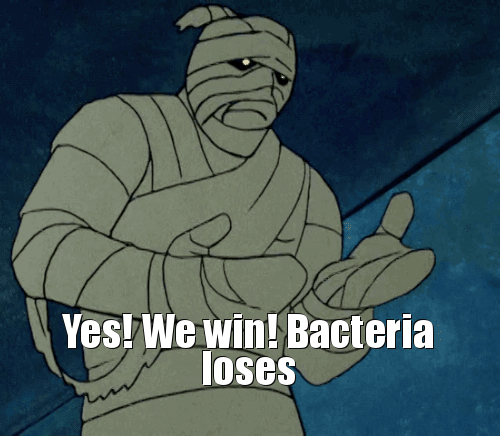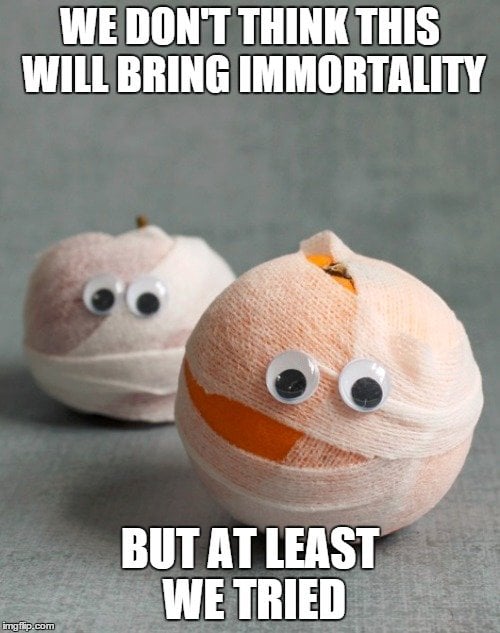Table of Contents (click to expand)
Mummification occurs when certain decompositions are prevented. In very dry and arid conditions, or extremely cold conditions, bacteria cannot decompose the body, and therefore it manages to survive. The Egyptian process of mummification involved many steps including removing certain organs, drying the body and killing bacteria in it through applying salt and covering the body with bandages.
Whenever the word ‘mummies’ is uttered, it evokes the image of a spooky, bandaged, rotting human body walking towards you, which is what popular media and Hollywood has given us. It comes as no surprise that a slightly “occult” vibe has always hung around the practice of preserving dead bodies as mummies, given the fact that many of them are thousands of years old. I, for one, have always wondered how dead bodies can be preserved for so long when the bananas on my counter rot within a week!
Recommended Video for you:
What Is A Mummy?
A mummy is any deceased body of a human or animal that has been preserved after death, either artificially or due to natural conditions.
The word mummy is derived from the Arabic ‘mummiya’, which is an Arabic word for ‘bitumen’ – the embalming substance used to preserve the bodies.
When the Arabs invaded Egypt in the 7th century AD and discovered the tombs and their contents, they called the bodies ‘mummiya’, due to their dark appearance and the embalming substance covering them. Thus, the process of artificially preserving a dead body using chemical or natural substances is called mummification.
However, mummies are not exclusively found in Egypt, although they seem to be the most famous ones. Believe it or not, they weren’t even the earliest mummified bodies! The oldest naturally created mummy is Ötzi, a 9500-year-old Paleolithic man whose remains were found in the Italian Alps.

How Are Mummies Made?
To understand how mummies can be made and preserved so well, we need to look at why things decompose in the first place.
The answer is bacteria. Bacteria feed on organic substances. In any environment, it takes a few hours after death for the process of decomposition to begin and it takes a few months for the flesh to completely decay, leaving the residual skeleton behind.
In the initial stages of decomposition, called autolysis, the organs that contain digestive enzymes (intestines) begin to digest themselves. In the second stage, called putrefaction, bacteria begin to break down the remaining organic matter.
However, bacteria require water or moisture to stay alive and function. Extremely cold or arid climates (found in deserts) are not suitable for bacteria to thrive, so the decomposition process does not happen nearly as quickly.
For example, Ötzi was found encapsulated in ice, which naturally preserved his body, since no bacteria could decompose it. This is similar to why vegetables are stored in refrigerators.
Egyptians also accidentally found undamaged bodies in their graves due to the arid conditions of the desert and interpreted this as a sign of living well in the afterlife. The desert sand would absorb all the moisture in the body and in its absence, decomposition would not take place. However, when people began burying the dead in caskets, the bodies decomposed, as the sand could not dry the flesh. At that point, the elaborate practice of mummification was invented.
This practice of preserving the cadavers was adopted not only by ancient Egyptians but other people too, many times for religious reasons. So now let us look at how they are made.

How Are Mummies Preserved?
In mummification, the goal is to strip the cadaver of moisture and make it completely dry both inside and outside. Then, the body is embalmed further to prevent decay by environmental factors and moisture attraction. In the absence of moisture, bacteria will not form.
This logic is the same as drying or pickling fruits to preserve them for longer. Our bodies are composed of 60-78% water. Therefore, the process was quite cumbersome and gory. It took priests 70 days to properly prepare a mummy for burial.
In the very first stage of mummification, the internal organs that could decay rapidly were removed from the body. Embalmers then proceeded to remove bits of the brain by passing a hook through the nasal cavity. The internal organs in the chest and abdomen region were extracted next.
The heart, which was believed to be the center of a person’s being and intelligence, was left in place. Internal organs were embalmed and processed separately and buried with the body in jars. Eventually, with newer techniques and better materials, the internal organs were left inside the body cavity.

Once the body was rid of all internal, easily perishable organs, it was further dried using a salt called Natron, which completely desiccated the body. Packets of Natron were placed inside the body and removed once the drying process was complete.
Since cells are rich in fluids, drying the body with salt was necessary. The abdominal cavity was sometimes rinsed with palm wine and then filled with fragrant herbs and spices to preserve the body shape. The body was further wrapped in layers of linen to absorb any residual moisture and resin (a highly viscous, plant-derived substance) was applied between the layers of linen. The viscosity would prevent moisture in the air from reaching the cadaver. The tightly wrapped body basically resembled the way a person looked in life.
A shroud was then placed over the body, which was finally placed in a stone or wooden casket that was carved to resemble the body.
Since this procedure was quite costly, only the affluent could afford it. That is why there are more mummies of pharaohs and ministers than normal civilians. Later, the development of cheaper techniques made the process less costly, so many more loved ones and common citizens were mummified.
The reason mummies have stayed unscathed for so long is entirely due to the knowledge of ancient Egyptian scientists who understood what caused decay and how to arrest it.
In other words, if you’re ever being chased by a mummy, just offer it some water… it’s probably just a bit dehydrated.












